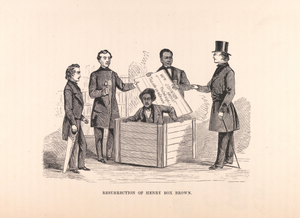Unidentified Artist
Description
Born near Easton, MarylandFrederick Douglass became the most influential African American of the nineteenth century by turning his life into a testimony on the evils of slavery and the redemptive power of freedom. After he escaped from bondage in 1838, Douglass quickly emerged as an outspoken advocate for equality and abolition. He founded the influential newspaper the North Star and, aware of the power of telling one’s own story, he frequently spoke and wrote about his life, publishing three genre-defining autobiographies.Today, historians consider Douglass’s second autobiography, My Bondage and My Freedom (1855), as his most significant. In it, the author not only describes his transition from enslavement to freedom, but also addresses the psychology of slavery and the racism that defined the lives of the newly free. This portrait resembles the engraved frontispiece of his well-known first autobiography, Narrative of the Life of Frederick Douglass (1845), a gripping account of his struggle for freedom. Through his writings and activism, Douglass prompted people to reckon with slavery’s existence and its aftermath, and, ultimately, to recognize the humanity of those who had been enslaved.Estate of Alphonso Janes [d. 1893]; gift 1902 to Rhode Island Historical Society; purchased 1974 NPGThe painting is not listed in the inventory of the estate of Alphonso Janes, but is so credited by the Rhode Island Historical Society. Copy in NPG curatorial file. Frank H. Goodyear, Jr., American Paintings in the Rhode Island Historical Society [Providence, 1974], p.72, no. 94.
Image
Oil On Canvas
National Portrait Gallery, Smithsonian Institution
Record Contributed By
National Portrait GalleryRecord Harvested From
Smithsonian InstitutionKeywords
- Abolitionist
- Abolitionists
- Communications
- Diplomacy
- Diplomat
- Diplomats
- Douglass, Frederick
- Education
- Educator
- Educators
- Enslaved Person
- Frederick Douglass
- Government
- Hammond, Elisha Livermore
- Lecturer
- Literature
- Male
- Men
- Minister
- Newspaper
- Newspapers
- Politics
- Politics And Government
- Portrait
- Portraits
- Publisher
- Reformer
- Reformers
- Slaver
- Society And Social Change
- Writer
- Writers





















